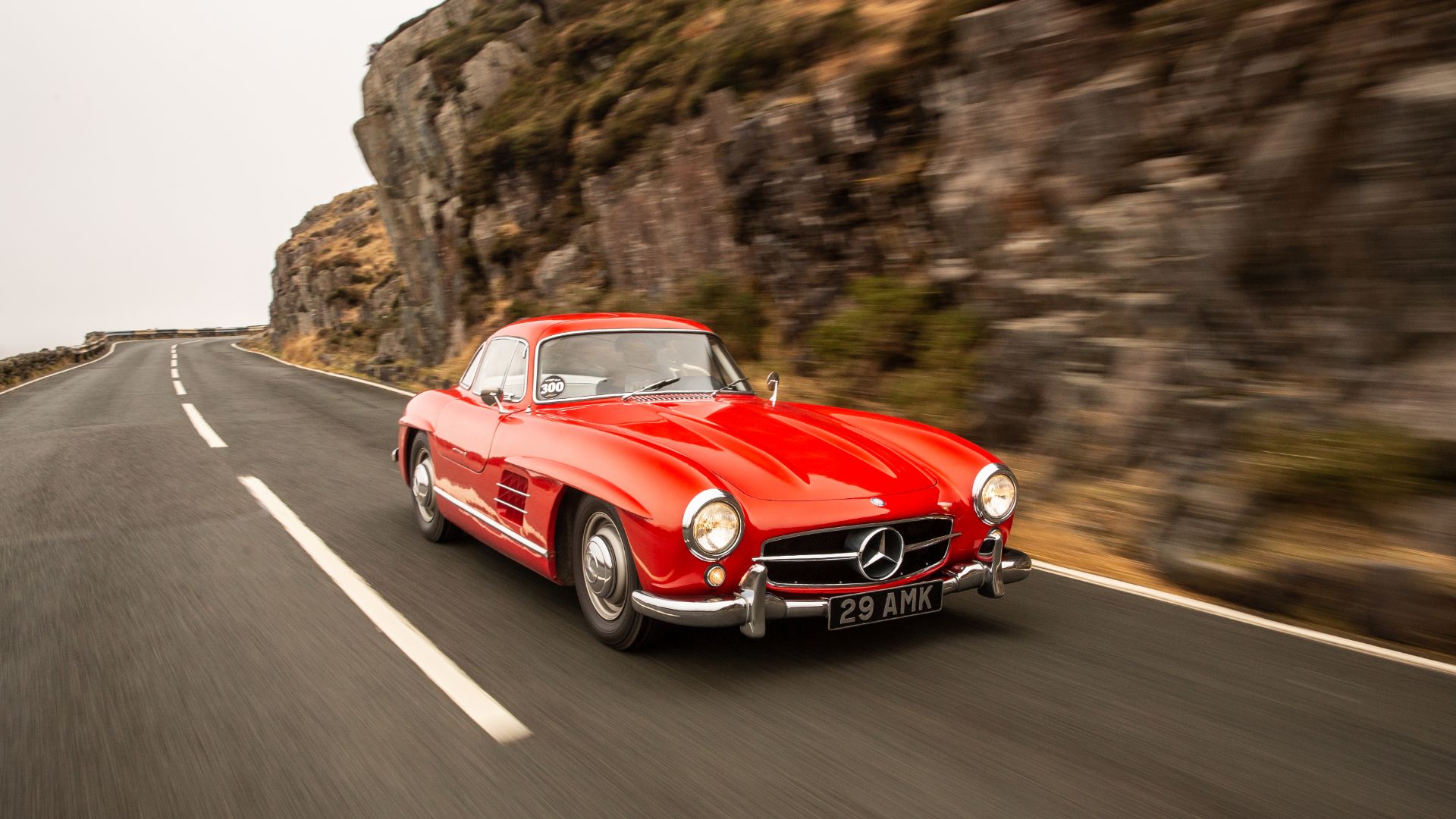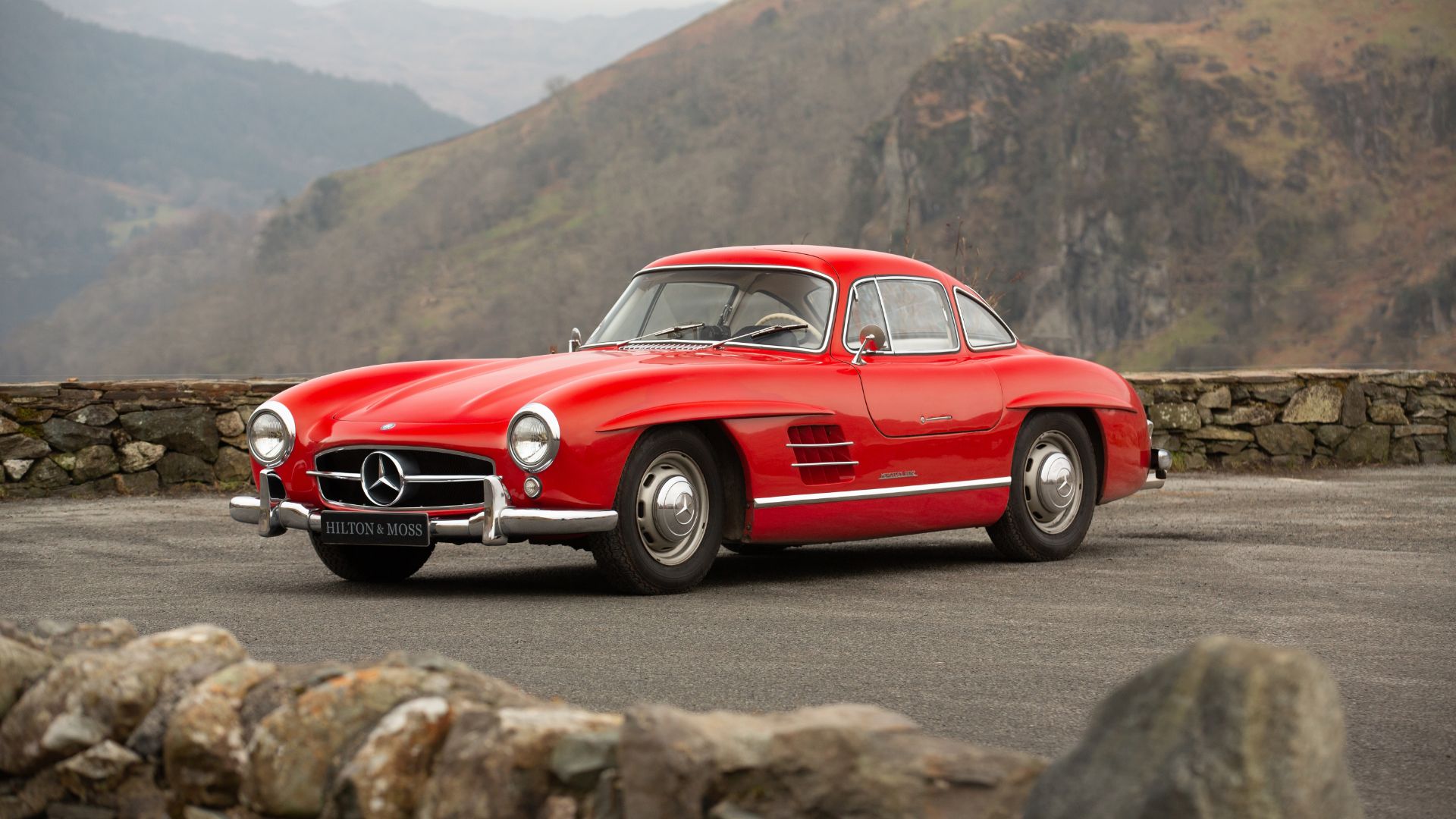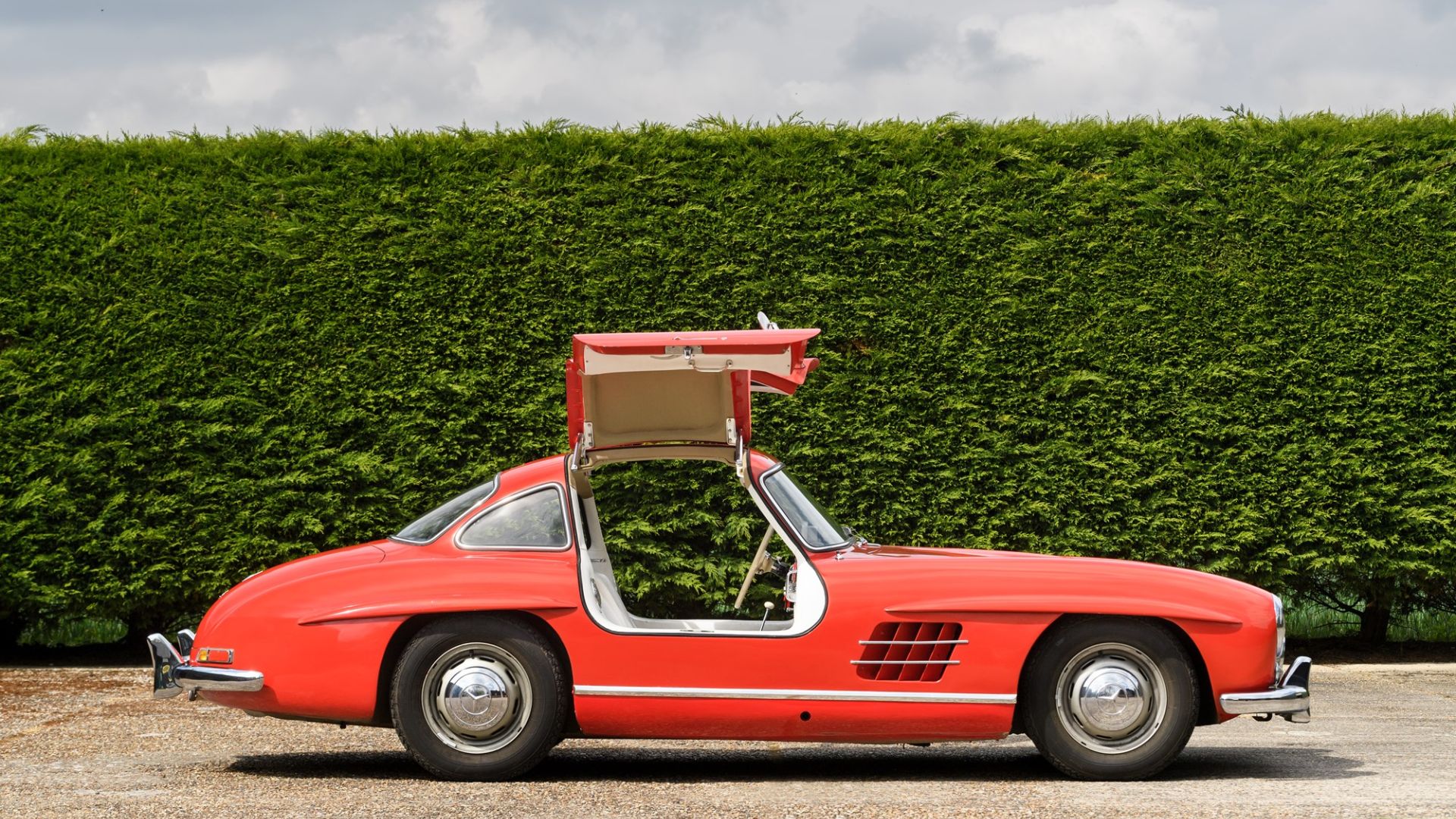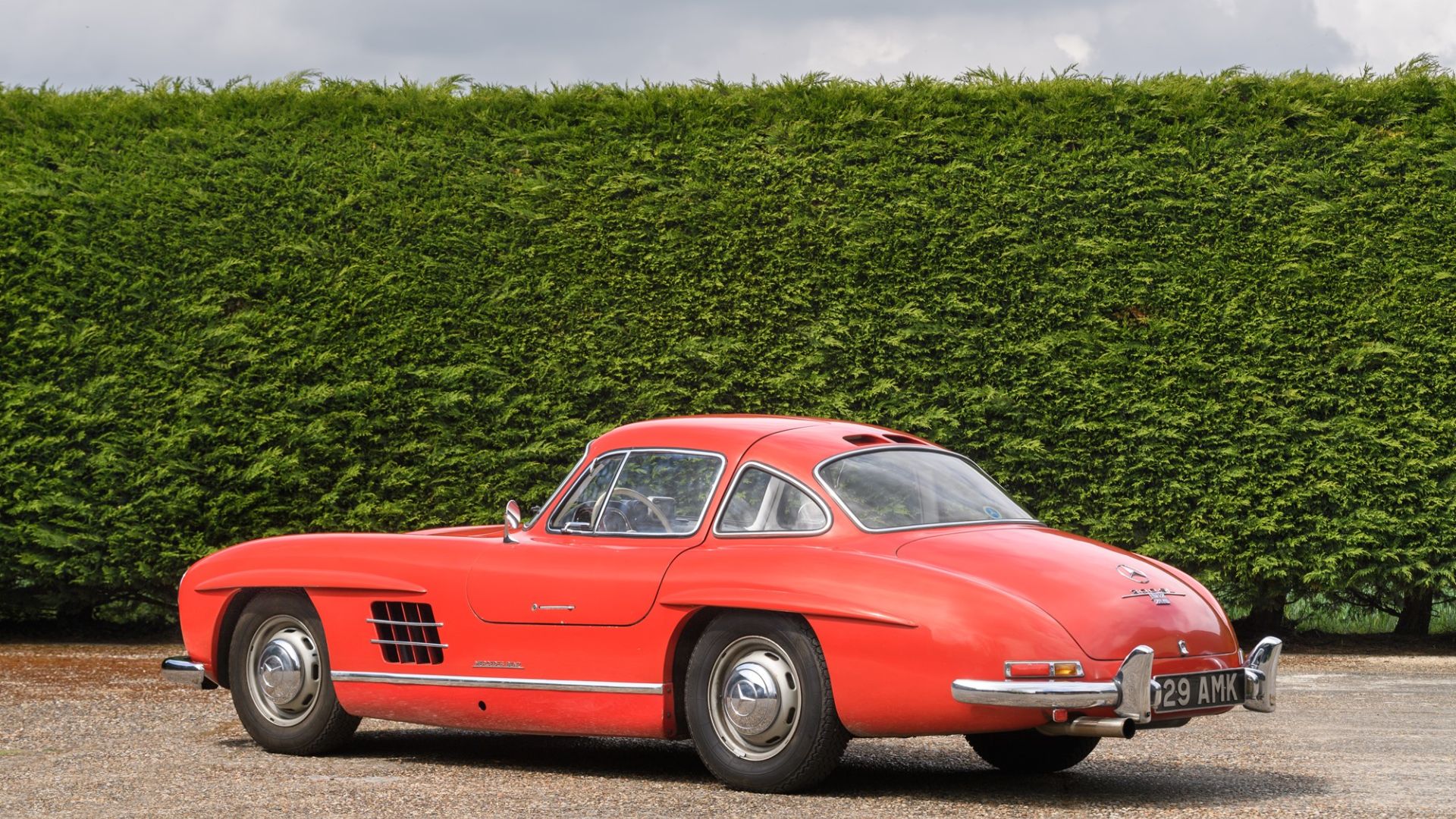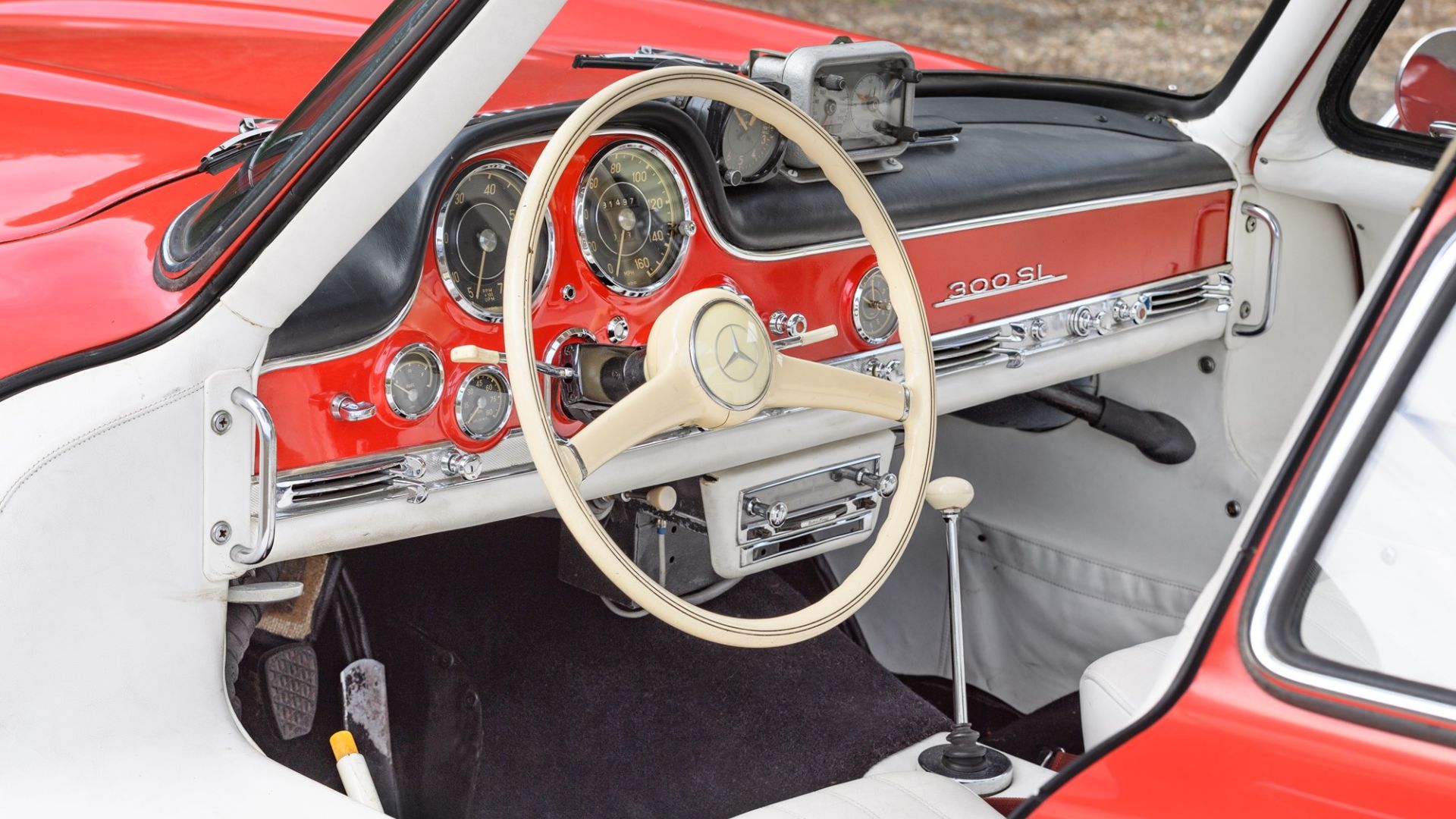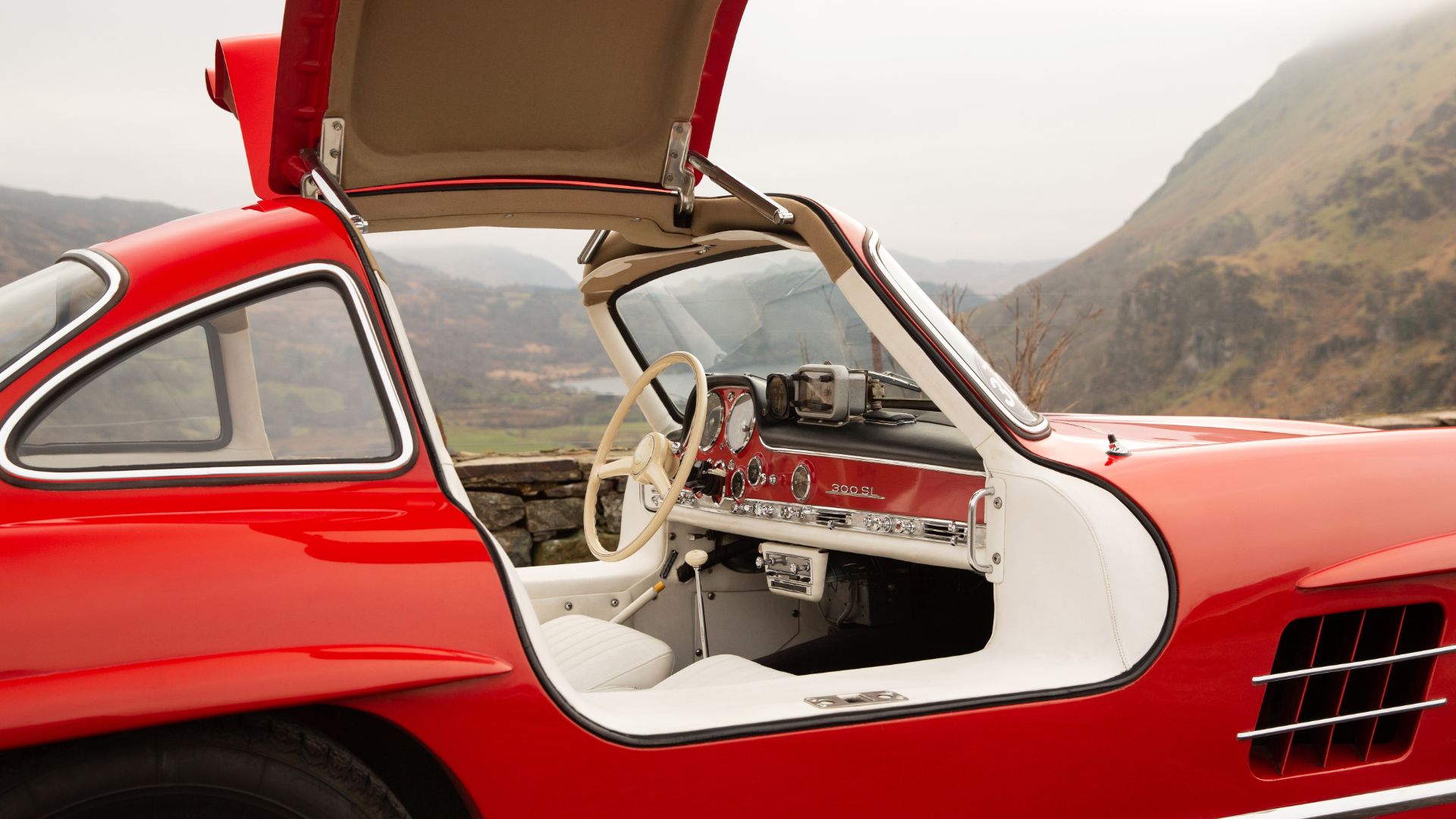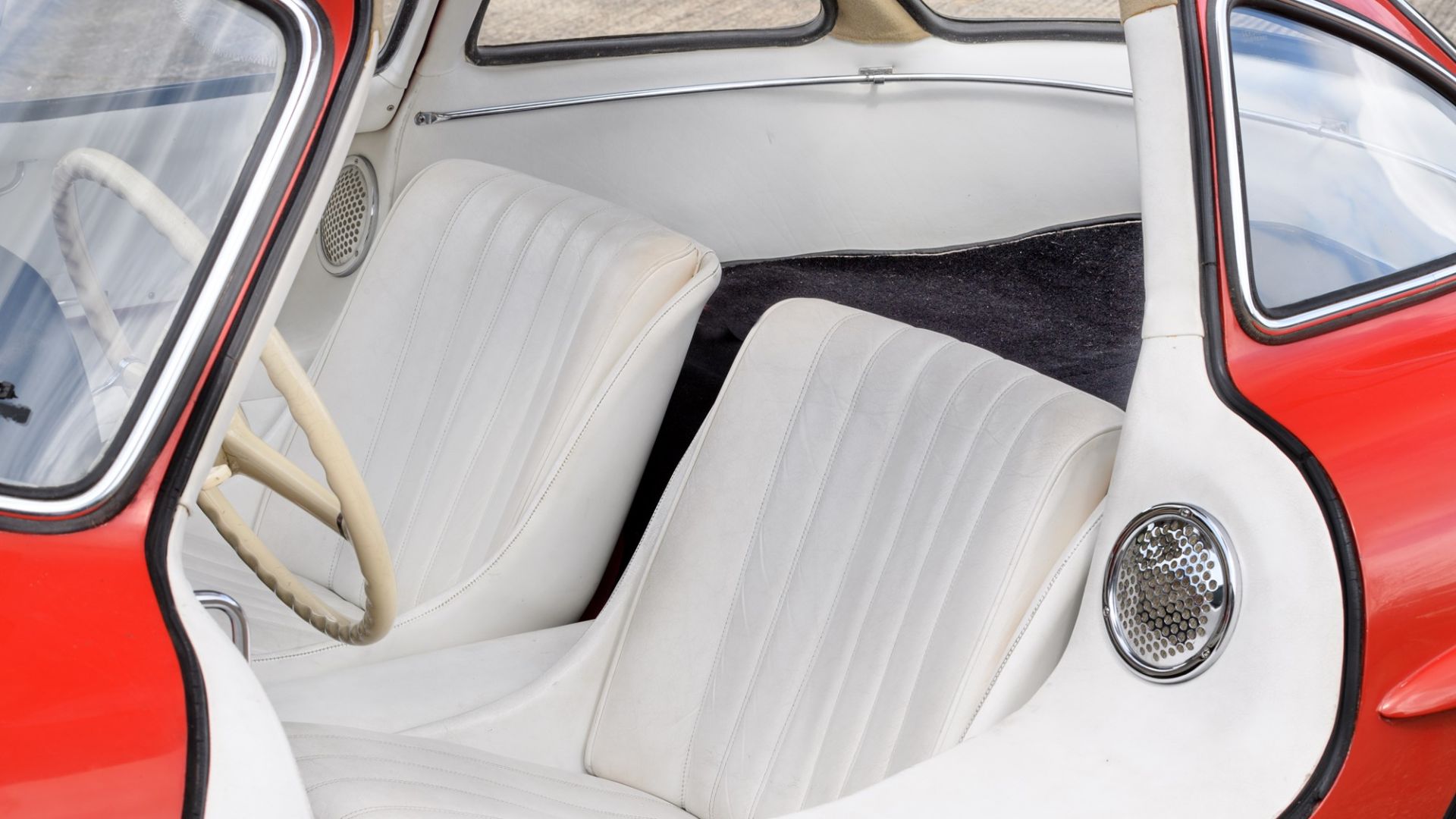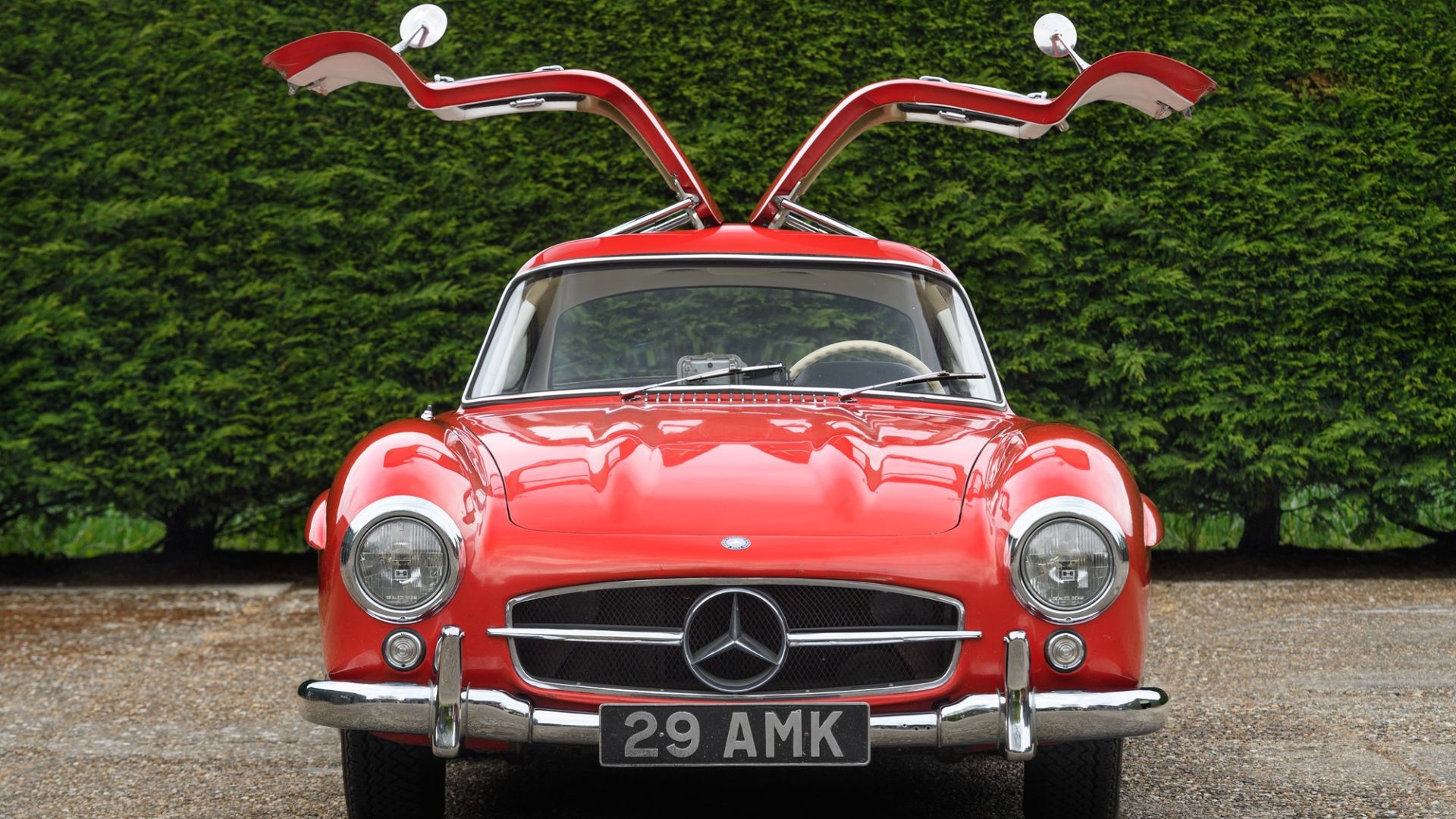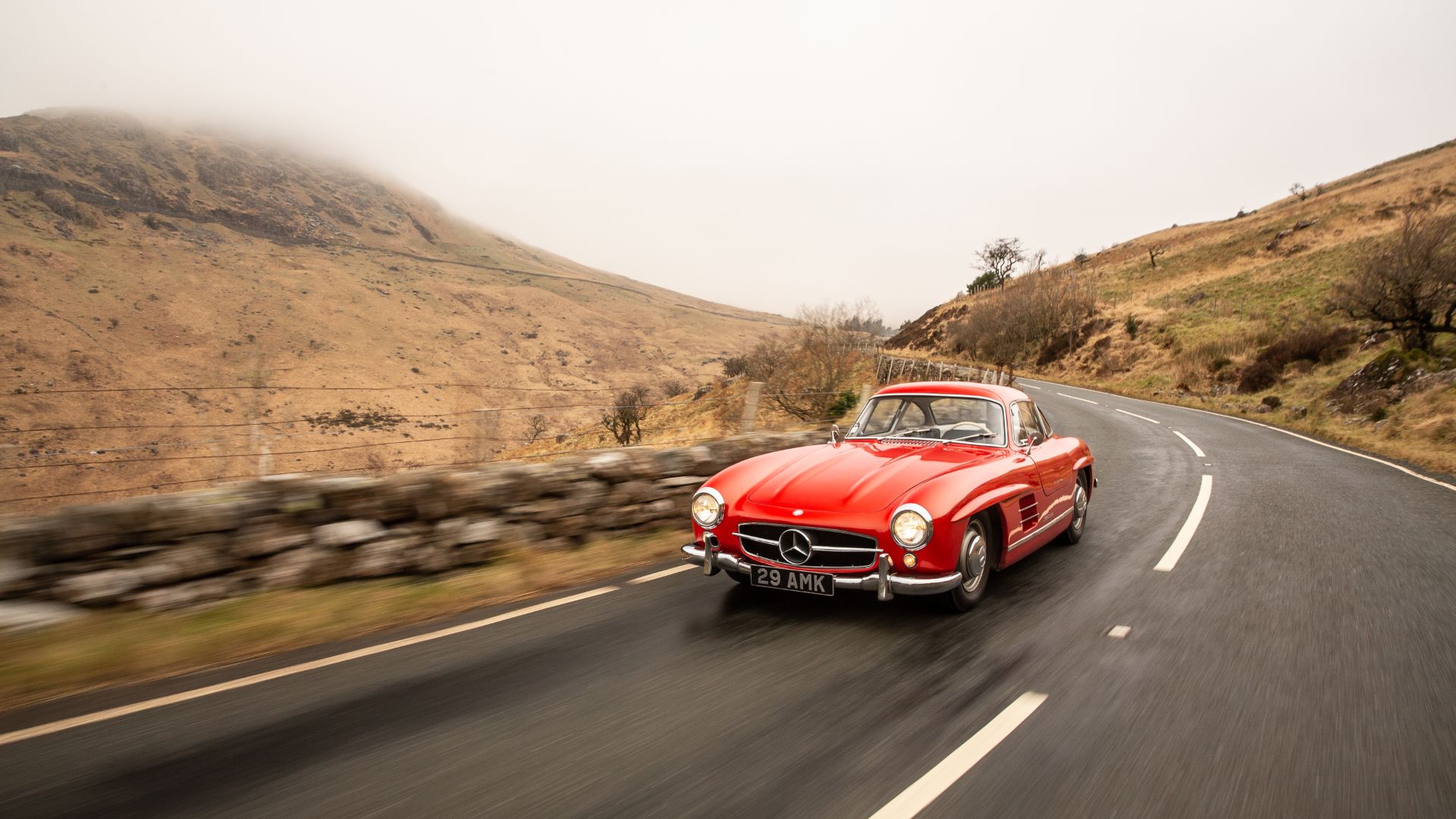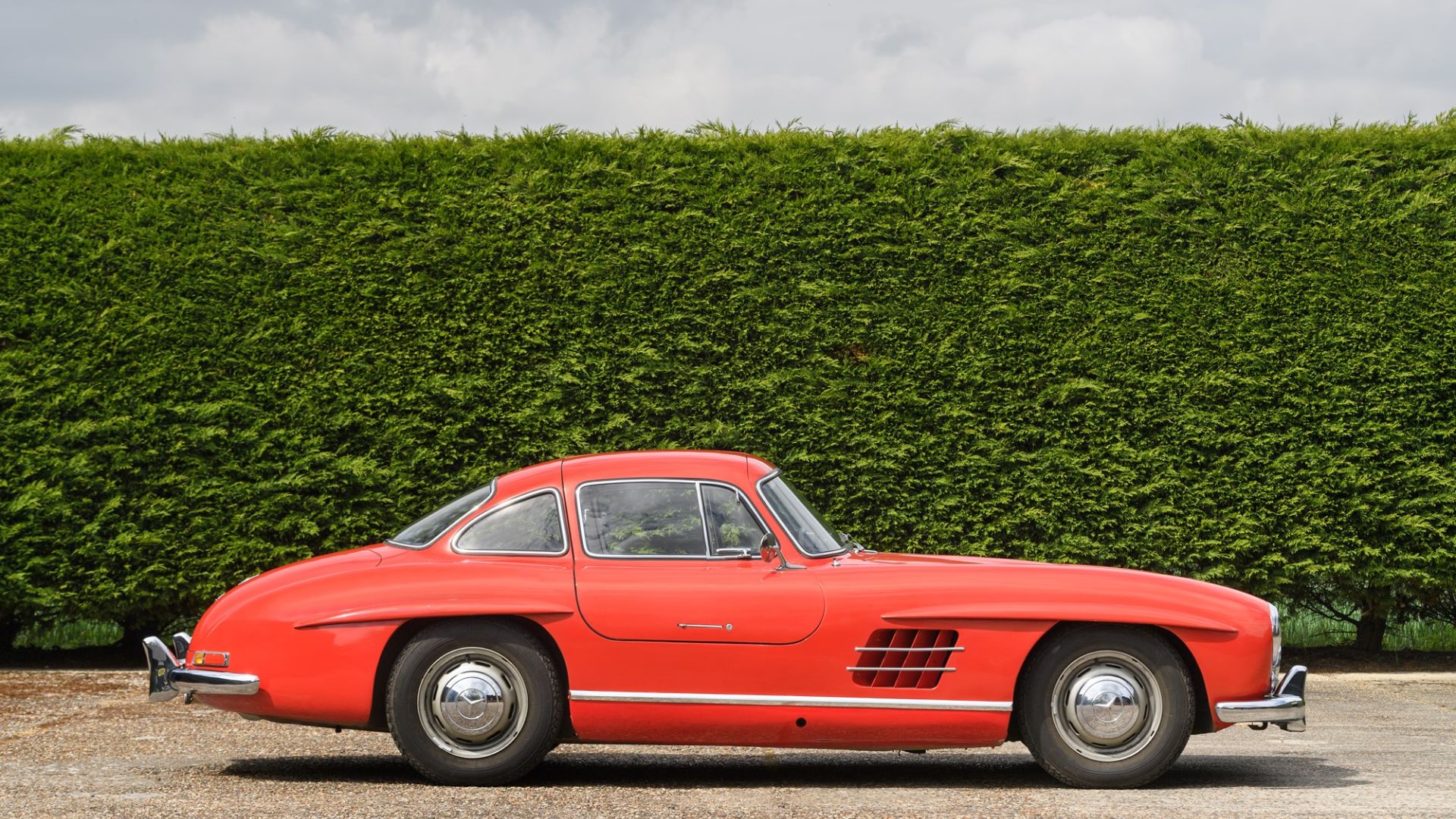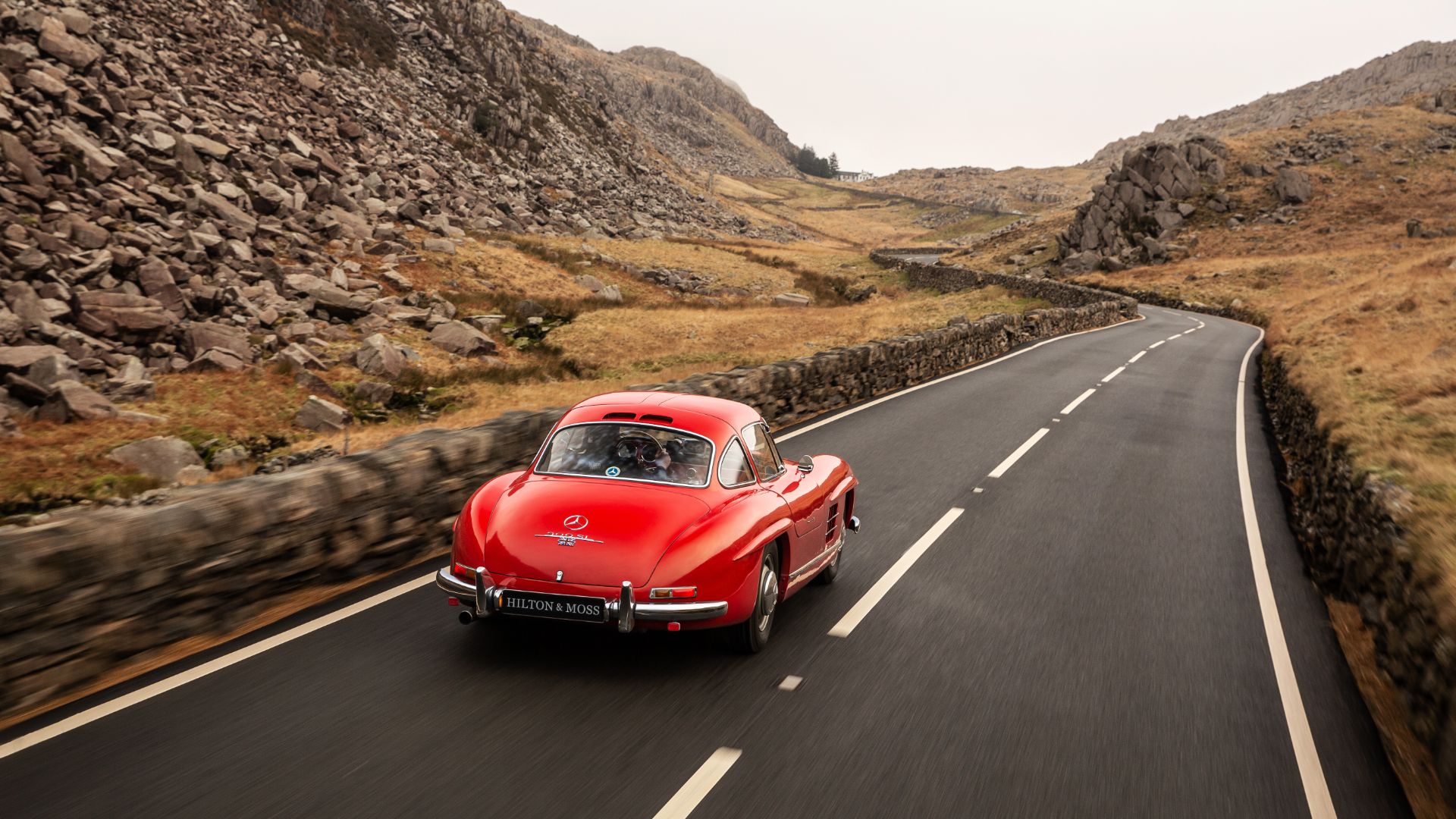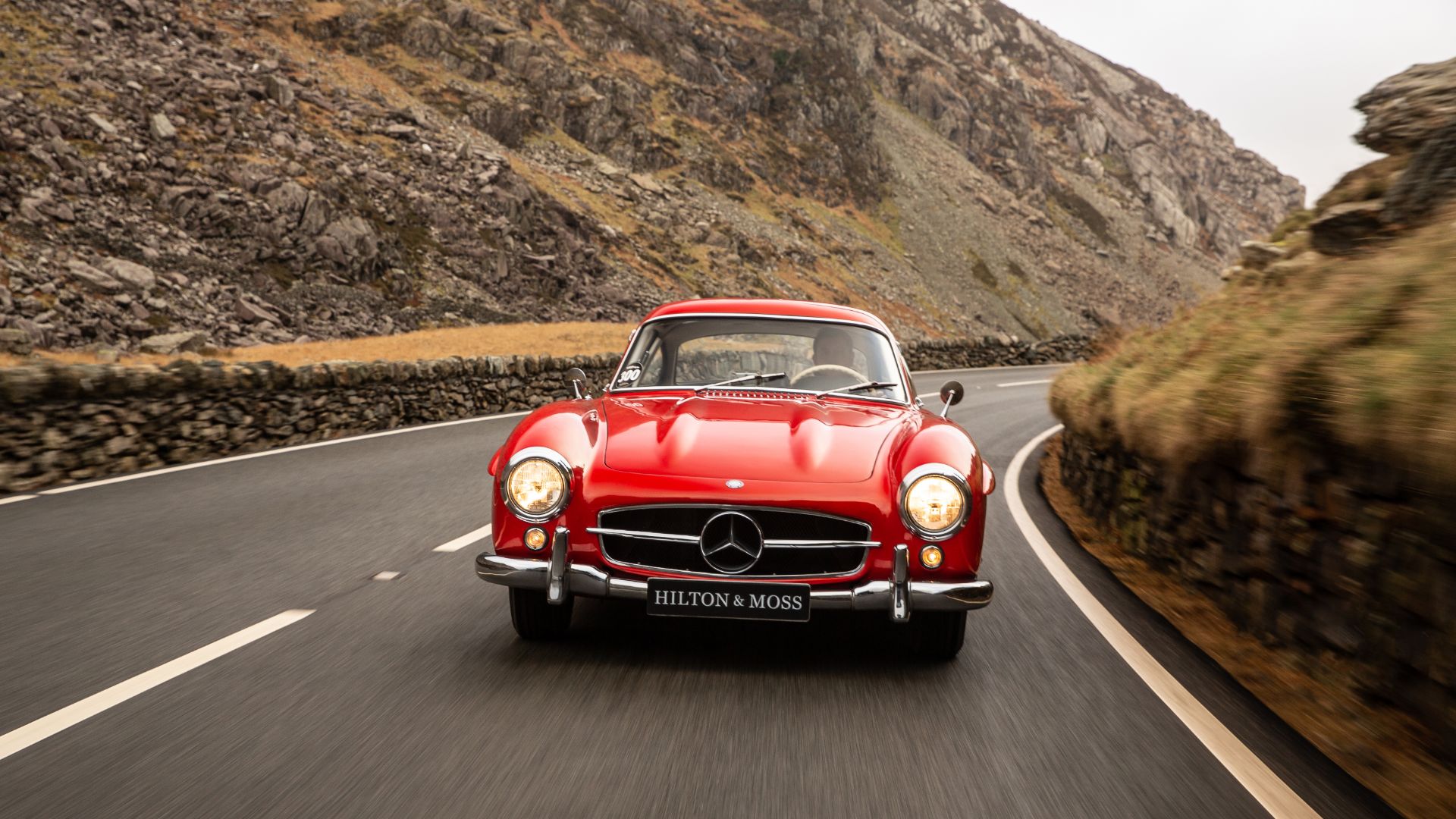Last month, a Mercedes-Benz 300SLR became, by a gigantic margin, the world’s most expensive car. The 1955 ‘Uhlenhaut Coupe’ – one of two original prototypes – sold to an anonymous collector for £115 million, smashing the previous auction record of £56 million for the Tour de France-winning Ferrari 250 GTO.
The Mercedes-Benz 300SL seen here was built a year later, and it features the same sleek silhouette, blistered wheelarches and dramatic gullwing doors.
It looks a million dollars, but is worth considerably more: £1.7 million, to be exact. That still makes it a bargain compared to its ultra-rare relative, though.
Gives you wings
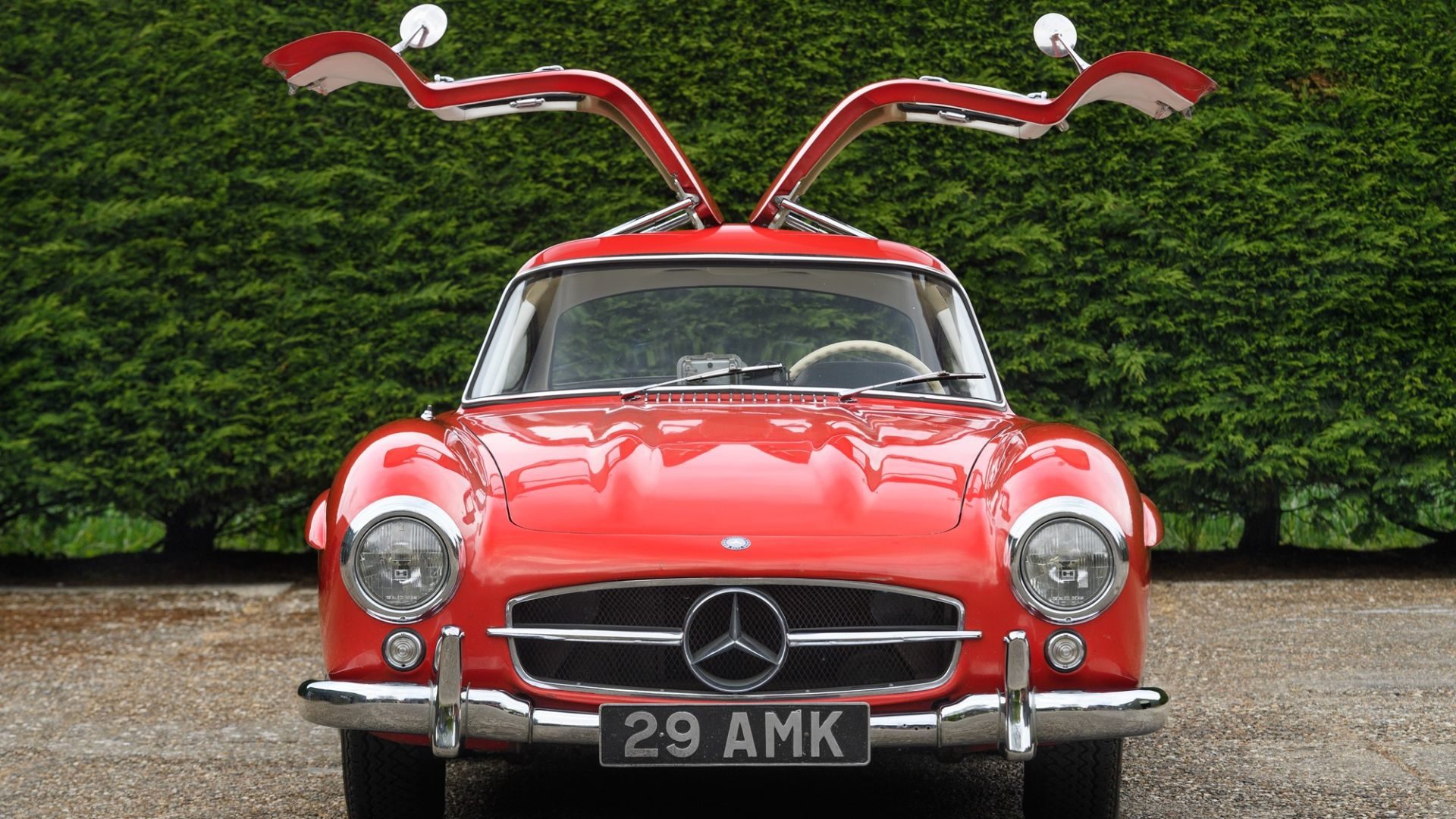
The 300SL was the brainchild of flamboyant Mercedes-Benz importer Max Hoffman, who saw the potential of a glamorous coupe for the wealthy US market. With a 0-62mph time of 8.5 seconds and top speed of 161mph, it was easily the fastest road car of its era. In 1956, American magazine Sports Cars Illustrated declared: ‘This is the finest production sports car in the world. No exceptions, no qualifications.’
Powered by a 215hp 3.0-litre straight-six – the first engine with fuel injection – the Super Leicht was also a formidable racer, claiming victories in the 24 Hours of Le Mans, European Rally Championship and Carrera Panamericana. Sadly, Pierre Levegh’s crash at Le Mans in 1955, which killed 83 spectators, saw Mercedes-Benz withdraw from motorsport, so the Uhlenhaut Coupe never had a chance to build on this success.
The first supercar
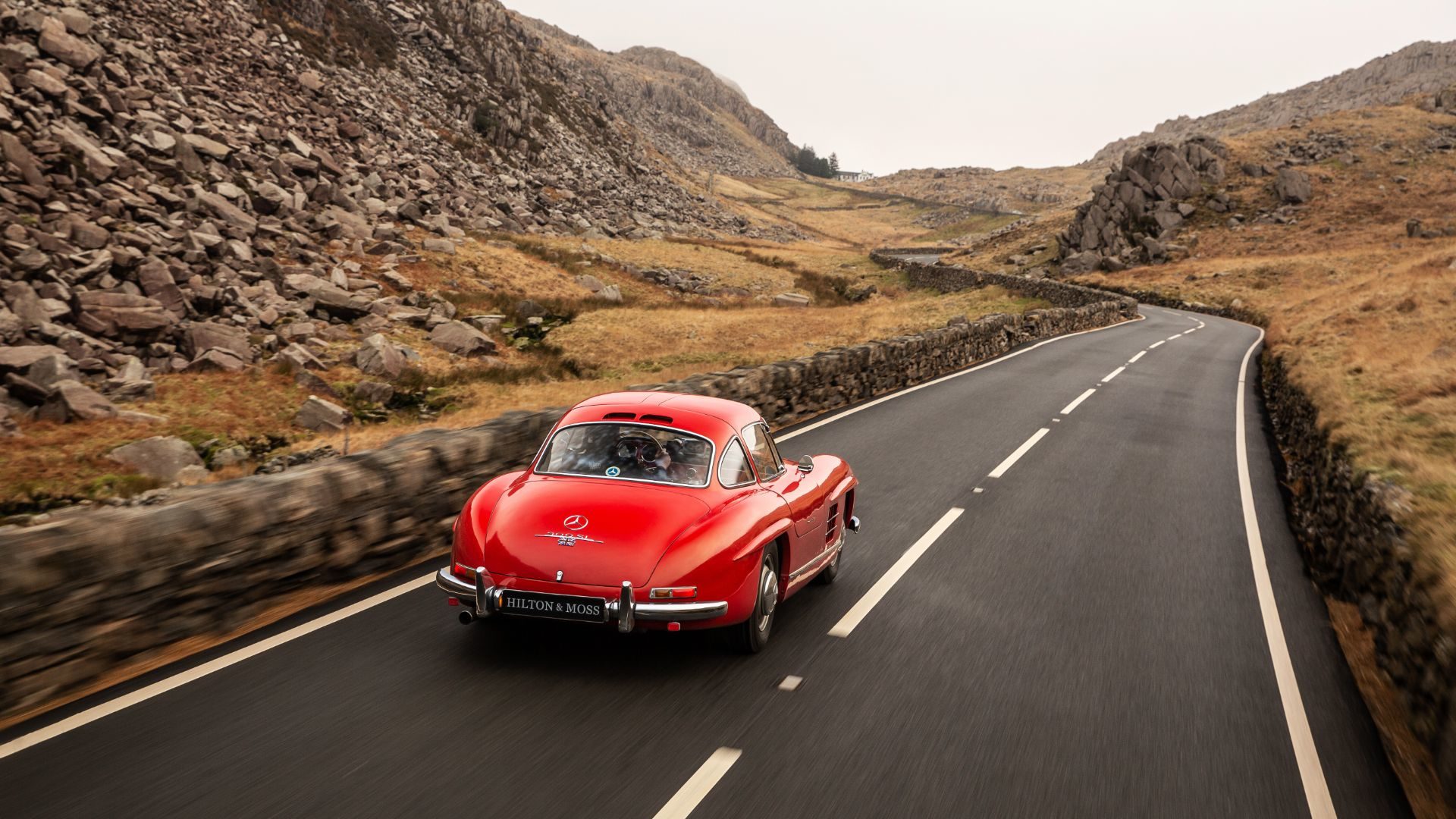
This particular Gullwing has covered 82,000 miles and still wears its original Feuerwehrrot (fire engine red) paint. Having spent three decades in the collection of a Middle Eastern prince, it’s now for sale with renowned Mercedes-Benz specialist Hilton and Moss. The price tag includes the cost of a ground-up restoration to your chosen specification. What a prospect!
The prospect of driving a 300SL is equally exciting. After all, this is one of the ultimate automotive pin-ups – and arguably the first modern supercar. On a wet Wednesday afternoon in the home counties, it looks almost otherworldly.
Lift the feather-light door and you can either vault or shuffle across the broad sill; there’s no elegant way to climb aboard a Gullwing. Once inside, however, it feels spacious and beautifully built. The two-tone dashboard is a model of clarity, the rear shelf offers space for two suitcases and the skinny roof pillars mean great visibility. My only gripe is the lack of ventilation; the side windows don’t roll down and air-con wasn’t an option. Driving a Gullwing in California must have been hot work.
The dry-sumped engine is canted over by 50 degrees to fit beneath the 300SL’s long, low bonnet. Twist the key and it coughs boisterously into life, then slot first gear via the spindly, ball-topped lever. The four-speed ’box feels precise and satisfyingly mechanical, and the motor pulls strongly from just 1,500rpm.
As the revs rise, the soundtrack swells to an urgent baritone roar that tingles every fibre of your being. The Italian supercars that followed boasted twice the cylinder-count, but this big ‘six’ has a brawny, hard-hitting character all its own.
A dream machine
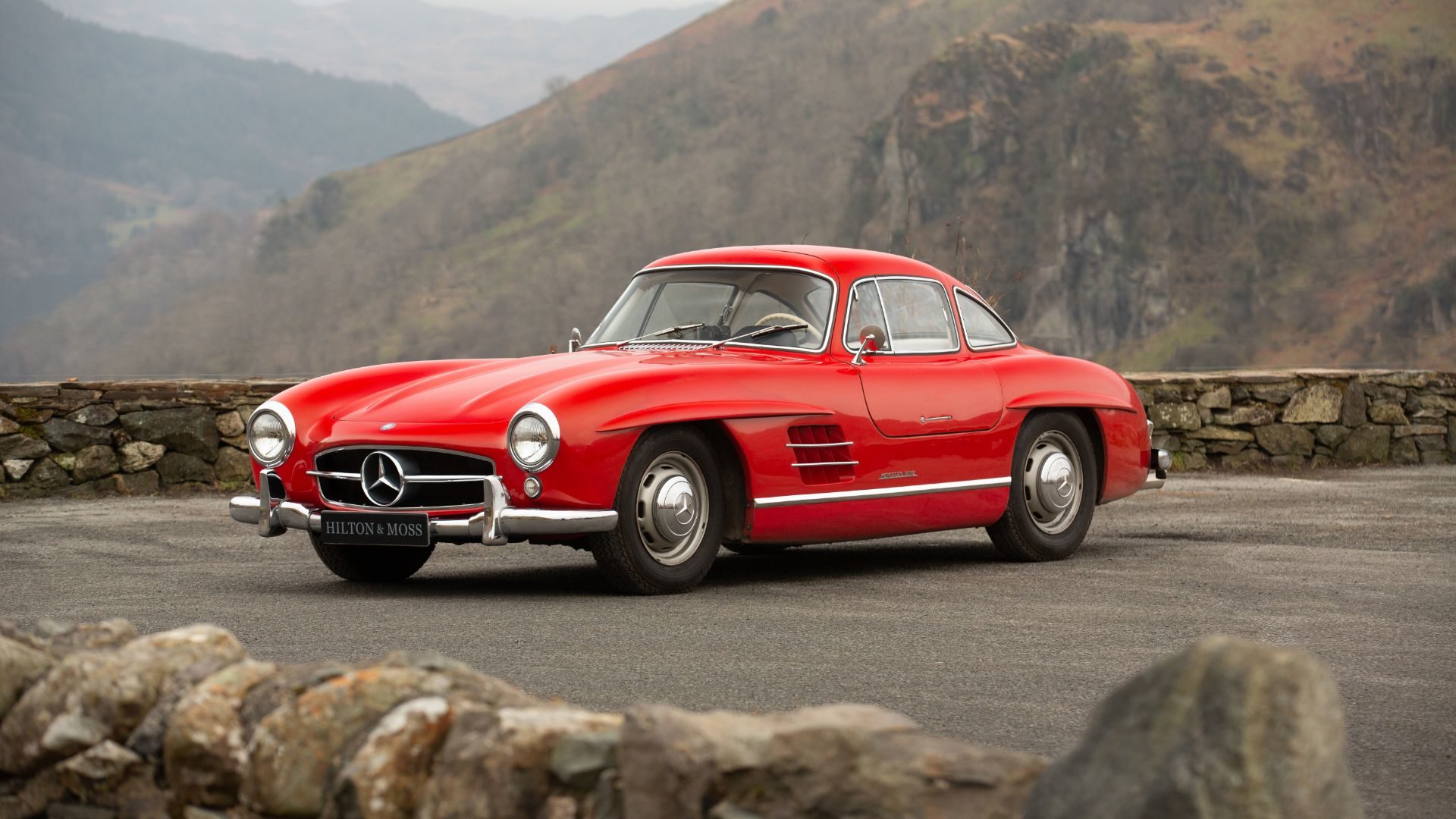
Once you forget about its value (and you will, eventually), the Gullwing proves a confident companion. It’s sufficiently docile and comfortable for trundling to the shops, or indeed a hedonistic road-trip to the south of France. Rest assured it would be reliable, too.
The recirculating ball steering is a tad vague and the all-round drum brakes require a firm shove, while oversteer is an ever-present possibility on rain-soaked roads. However, compared with almost anything built in the 1950s, the 300SL drives like a dream.
For most of us, this iconic Mercedes-Benz will remain just that. The Gullwing has always been a kind of automotive fantasy, but the reality doesn’t disappoint. Never meet your heroes? Not in this case.
ALSO READ:
Mercedes-Benz SL SportLine 2022 review
RML Short Wheelbase 2022 review
